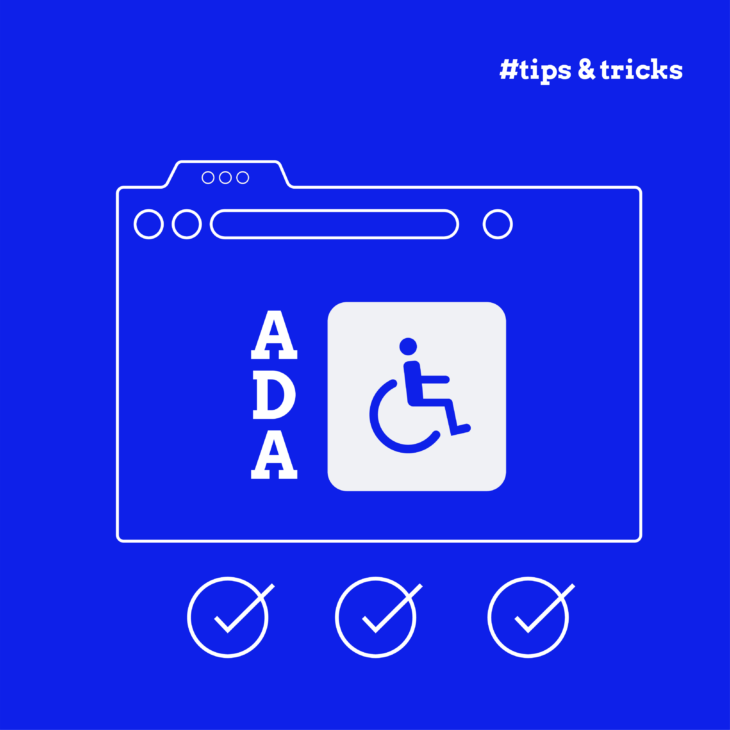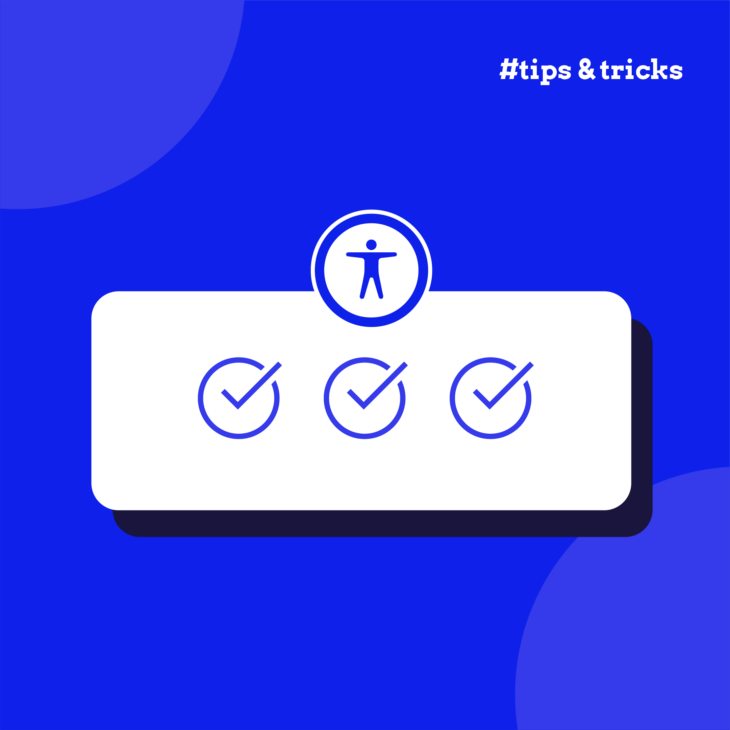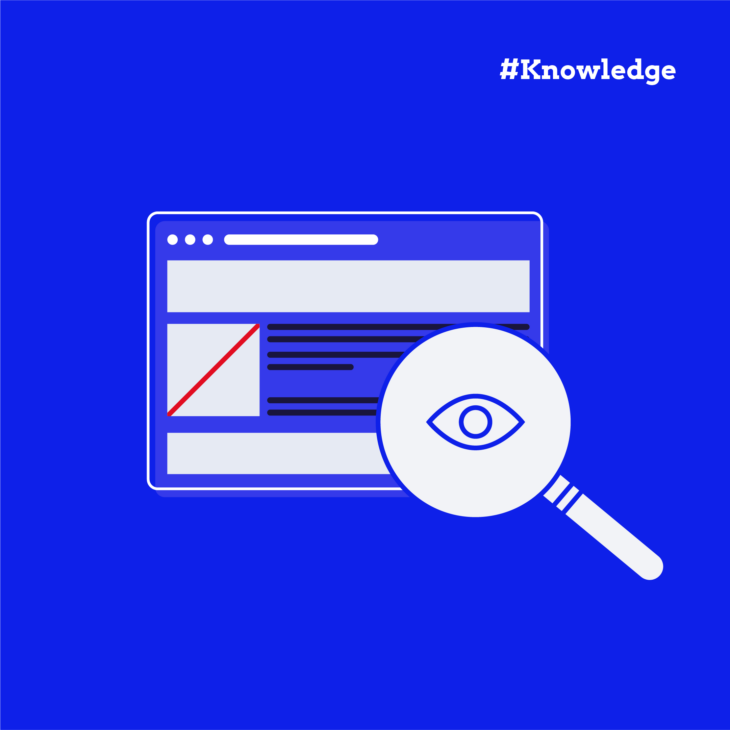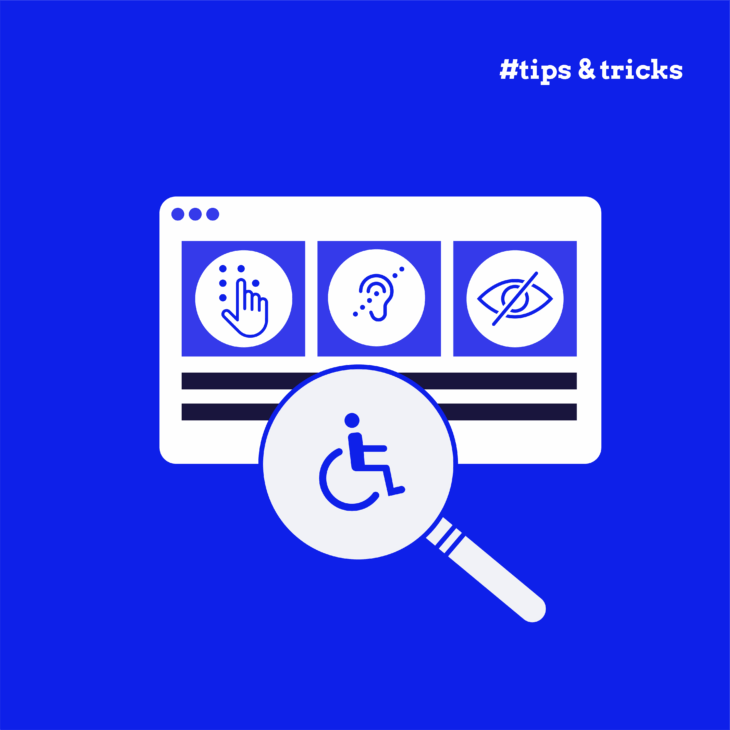Caitlin de Rooij is a Web Accessibility Specialist. She works as an Accessibility Consultant for Level Level and provides training and workshops for enhancing digital accessibility. Caitlin’s expertise lies in ensuring that websites and digital content are designed and developed to be inclusive and usable for individuals with diverse abilities and disabilities.
Does your website work well for everyone who visits it? If you’re not testing your site for accessibility, you might be excluding millions of potential users and risking expensive lawsuits.
In 2022 alone, plaintiffs filed over 3,000 federal lawsuits about website accessibility, with 97% focusing specifically on website access issues. That’s why you should periodically be testing your website or web application to ensure it complies with the Americans with Disabilities Act (ADA).
But ADA testing doesn’t have to be complicated. By combining smart automated tools with hands-on testing approaches, you can make your website more welcoming for everyone. Plus, you’ll protect your organisation from legal troubles.
In this guide, you’ll learn practical strategies for ADA testing that fit into your existing workflows. We’ll cover everything from basic WCAG requirements to advanced testing techniques – whether you’re building a new site or improving an existing one.
Testing your website for ADA compliance: An overview
ADA testing helps ensure your website works well for people with disabilities and that your site meets the requirements set by the Americans with Disabilities Act. When websites aren’t properly tested for accessibility, two big problems can occur:
First, you might face legal issues. Take the famous Domino’s Pizza case, where a person who was blind couldn’t order pizza through their website or app because they weren’t compatible with screen readers. This led to a lawsuit that went all the way to the Supreme Court, which decided to uphold the judgment against Domino’s by a lower court.
Second, you’re missing out on connecting with a huge audience. About 13.5% of the U.S. population has disabilities, representing $490 billion in spending power. That’s a lot of potential customers who might struggle to use your website if it’s not properly tested.
So, who needs to test their sites? While every website should be accessible, these organisations must comply with the ADA:
- Government agencies.
- Schools and universities.
- Healthcare providers.
- Banks and financial services.
- Hotels and restaurants.
- Online shops.
The best time to start testing? Right at the beginning of your website project. As Taeke Reijenga, founder & trainer at The A11Y Collective, says:
“Building in accessibility from the start saves both time and money compared to fixing issues later. In 2016, Cordelia McGee-Tubb made the delicious analogy that doing this is like stuffing blueberries into an already-baked muffin instead of cooking with them. “By definition yes, it’s a blueberry muffin, and yes, you may have an accessible system, but it is not a good system.“
But don’t worry if your site is already live – you can still add accessibility testing to your regular maintenance routine. Just remember: this isn’t a one-time job. You’ll want to keep testing as you update your site.
When testing for ADA compliance, you’ll want to check your site against the WCAG principles, often remembered by the acronym POUR:
| Perceivable | Operable | Understandable | Robust |
|---|---|---|---|
| Adding text descriptions for images. | Making everything work with a keyboard. | Writing clear, readable content. | Writing clean code that works with screen readers. |
| Making content that works in different layouts. | Giving people enough time to read and use content. | Making pages work consistently. | Supporting both current and future assistive technologies. |
| Ensuring text and backgrounds have enough contrast. | Providing clear ways to navigate. | Helping people avoid and fix mistakes. |
To measure how well your site aligns with these principles, WCAG has three levels of conformance:
- Level A: The basic level, which meets fundamental accessibility needs.
- Level AA: The standard most sites aim for, which addresses major barriers.
- Level AAA: The highest level, which provides extra accessibility features.
Next, we’ll look at specific techniques and tools you can use to test these requirements on your site.
ADA testing techniques for detecting accessibility issues
Testing for ADA compliance requires both automated and manual approaches. Automated tools provide efficient, scalable testing for technical compliance, while manual testing ensures a comprehensive evaluation of user experience and complex accessibility scenarios. A well-structured testing workflow combines both methods to achieve thorough coverage of WCAG requirements.
Using automated tools
Automated testing tools scan your website’s code to find common accessibility problems quickly. These tools can check hundreds of pages in minutes, finding issues like:
- Missing alt text on images.
- Poor colour contrast.
- Missing form labels.
- Empty headings.
- Broken ARIA attributes.
⚠️Don’t rely on automated tools alone! For example, they can flag missing alt text, but they won’t flag any nonsensical descriptions, which are just as bad.
Conducting manual testing
While automated tools are helpful, they can’t catch everything. Manual testing helps find issues that need human judgment, like:
- Whether alt text accurately describes images.
- If headings make logical sense.
- Whether forms are easy to complete.
- If error messages are helpful.
- Whether navigation is intuitive.
Here’s how to conduct manual testing effectively:
Most importantly, involve people who use assistive technologies in your testing. Their real-world experience provides insights that no automated tool can match.
Testing by development phase: What to check and when
Different phases of your project need different testing approaches. Here’s a practical breakdown of what to check at each stage:
| Phase | Key checks to perform | Example tools |
|---|---|---|
| Design phase | • Contrast ratios between text and backgrounds. • Touch target sizes (minimum 44×44px for mobile). • Reading order and visual hierarchy. • Font sizes and readability. • Focus indicators visibility. • Alternative interaction patterns. • Content reflow at different screen sizes. | • Stark (Figma/Sketch plugin for contrast) • Able (Figma plugin for accessibility) • Colour Oracle (free colour blindness simulator) • WebAIM Contrast Checker • A11y Annotation Kit (design documentation) • Who Can Use (colour combination testing) |
| Development Phase | • Keyboard navigation flow. • Screen reader compatibility. • ARIA implementation. • Form labels and error messages. • Semantic HTML structure. • Interactive component behaviour. • Dynamic content announcements. • Page titles and landmarks. | • axe DevTools (browser extension) • WAVE (browser extension) • Pa11y (command line tool) • Lighthouse (Chrome DevTools) • NVDA/JAWS (screen readers) • eslint-plugin-jsx-a11y (React projects) • Testing Library (component testing) |
| Post-Launch | • Full user journey testing. • Cross-browser compatibility. • Mobile accessibility. • Performance impact on assistive tech. • Real user feedback. • Compliance documentation. • Regression testing after updates. • Analytics on accessibility features usage. | • BrowserStack (cross-platform testing) • Manual testing with users • Google Analytics (track feature usage) • Professional audits |
💡 Did you know? Testing at the design phase can prevent accessibility issues from ever being coded. That’s why designers using tools like Figma’s contrast plugins save their teams hours of rework later.
Making testing stick: practical tips for each phase
- During design sprints: Start your design reviews with an accessibility checklist. Before any mockup gets approved, quickly run it through contrast checkers and simulate how it looks with colour blindness. Takes five minutes, saves five hours.
- While coding: Set up your development environment to flag accessibility issues automatically. Most modern IDEs can highlight problems as you type – missing alt text, improper ARIA usage, or inaccessible form controls. Fix them before they hit staging.
- After going live: Schedule monthly accessibility checks, just like you’d check your site analytics. Pick five random pages and run them through WAVE. Test one complete user journey with keyboard navigation. Keep a simple spreadsheet of what you find and fix.
Remember: the earlier you catch issues, the cheaper they are to fix. A colour contrast problem caught in Figma takes seconds to adjust. The same issue discovered after launch might mean redesigning entire components.
Best practices for ADA testing
Keeping up with accessibility standards forms the foundation of good ADA testing. WCAG 2.1 is the standard quoted in many legislations, while WCAG 2.2 is the latest version, so make sure you have a good understanding of both of these. If you want to be proactive, you can also keep an eye on the future version – WCAG 3.0.
Create a workflow
Make accessibility testing simple by creating clear, easy-to-follow testing checklists, setting up regular testing schedules, building testing into your team’s routine, and, most of all, training your team on accessibility basics.
Test your site regularly, especially after:
- Major updates or redesigns.
- Adding new features.
- Changing navigation or layout.
- Quarterly maintenance checks.
You also need to set up a thorough testing protocol that combines automated tools and manual testing. The best strategy here is to undertake regular professional ADA audits from experts like The A11Y Collective. We will test your site across different devices and browsers, include people with disabilities in the testing team, and ensure you’re fully compliant with laws like the ADA.
Document your tests
Documentation plays a vital role in maintaining accessibility standards. Each time you test, record the date, scope, and tools used. Note any issues you discover and document your fixes in detail. When you retest, keep track of the improvements. This detailed record-keeping helps you spot patterns, track progress, and demonstrate your commitment to accessibility.
Invest in education
Finally, your team’s knowledge and skills make a big difference in maintaining an accessible website. Invest time in teaching them about accessibility principles and how to spot common issues. Help them understand how to use testing tools effectively and why inclusive design matters.
When your whole team appreciates the importance of accessibility, they’re more likely to catch and fix problems early. This shared understanding creates a culture where accessibility becomes second nature rather than an afterthought.
Level up your ADA testing with The A11Y Collective
Understanding how to test for accessibility issues is just the first step. Building a truly accessible website requires ongoing learning and commitment from your entire team.
Remember, your main goal should be to create better experiences for real people. When websites aren’t accessible, 71% of users with disabilities simply leave. That’s a lot of people who might never return to your site.
At The A11Y Collective, we offer courses to help you master every aspect of web accessibility. Whether you’re just starting to learn about ADA requirements or ready to dive into advanced design and coding techniques, you’ll find courses that match your needs.
Need to know where your site stands right now? At The A11Y Collective, we provide thorough accessibility audits that examine your code, design, and content. These audits help you understand exactly what needs improving and how to fix it.
It’s time to build something that truly works for everyone who visits your site. Get started with our audit service at The A11Y Collective to guide you through your next steps toward better accessibility!
Ready to get started?
Book your accessibility audit with The A11Y Collective to take the next step towards building an inclusive, accessible website.






